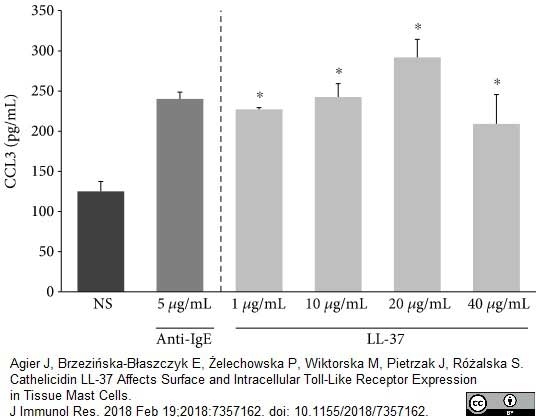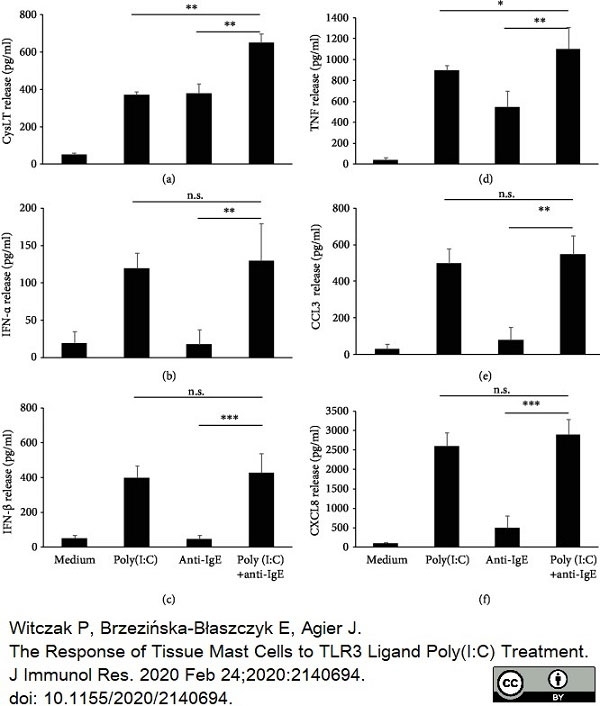IgE antibody | MARE-1


Mouse anti Rat IgE:FITC
- Product Type
- Monoclonal Antibody
- Clone
- MARE-1
- Isotype
- IgG1
- Specificity
- IgE
| Mouse anti Rat IgE antibody, clone MARE-1 recognizes rat epsilon heavy chain of immunoglobulin IgE and does not cross-react with other classes of rat immunoglobulin. Mouse anti Rat IgE antibody, clone MARE-1 binds to rat IgE with an avidity of 4x109M-1 |
- Target Species
- Rat
- Product Form
- Purified IgG conjugated to Fluorescein Isothiocyanate Isomer 1 (FITC) - liquid
- Preparation
- Purified IgG prepared by affinity chromatography from tissue culture supernatant
- Buffer Solution
- Phosphate buffered saline
- Preservative Stabilisers
0.1% Sodium Azide 50% Glycerol - Immunogen
- Rat IR162, IR1016, IR2 and IR410 IgE myeloma proteins.
- Approx. Protein Concentrations
- IgG concentration 1 mg/ml
- Fusion Partners
- Spleen cells from immunised BALB/c mice were fused with cells of the mouse SP2/0 myeloma cell line.
- Max Ex/Em
-
Fluorophore Excitation Max (nm) Emission Max (nm) FITC 490 525 - Regulatory
- For research purposes only
- Guarantee
- 12 months from date of despatch
Avoid repeated freezing and thawing as this may denature the antibody. Storage in frost-free freezers is not recommended. This product is photosensitive and should be protected from light.
| Application Name | Verified | Min Dilution | Max Dilution |
|---|---|---|---|
| Flow Cytometry | 5ug/ml |
- Flow Cytometry
- Use 50ul of the suggested working dilution to label 2 x 107 cells in 100ul.
| Description | Product Code | Applications | Pack Size | List Price | Your Price | Quantity | |
|---|---|---|---|---|---|---|---|
| Mouse IgG1 Negative Control:FITC | MCA1209F | F | 0.1 mg |
|
Log in | ||
| List Price | Your Price | ||||||
|
|
Log in | ||||||
| Description | Mouse IgG1 Negative Control:FITC | ||||||
References for IgE antibody
-
Negrão-Corrêa, D. et al. (1996) Intestinal transport and catabolism of IgE: a major blood-independent pathway of IgE dissemination during a Trichinella spiralis infection of rats.
J Immunol. 157 (9): 4037-44. -
Silveira, M.R. et al. (2002) Infection with Strongyloides venezuelensis induces transient airway eosinophilic inflammation, an increase in immunoglobulin E, and hyperresponsiveness in rats.
Infect Immun. 70: 6263-72. -
Bąbolewska, E. & Brzezińska-błaszczyk, E. (2015) Human-derived cathelicidin LL-37 directly activates mast cells to proinflammatory mediator synthesis and migratory response.
Cell Immunol. 293 (2): 67-73. -
Korinek, M. et al. (2016) Anti-allergic potential of Typhonium blumei: inhibition of degranulation via suppression of PI3K/PLCγ2 phosphorylation and calcium influx.
Phytomedicine. 23 (14): 1706-15. -
Tulinská, J. et al. (2018) Humoral and cellular immune response in Wistar Han RCC rats fed two genetically modified maize MON810 varieties for 90 days (EU 7th Framework Programme project GRACE).
Arch Toxicol. 92 (7): 2385-99. -
Ueta, H. et al. (2018) Single blood transfusion induces the production of donor-specific alloantibodies and regulatory T cells mainly in the spleen.
Int Immunol. 30 (2): 53-67. -
Agier, J. et al. (2018) Cathelicidin LL-37 Affects Surface and Intracellular Toll-Like Receptor Expression in Tissue Mast Cells.
J Immunol Res. 2018: 7357162. -
Witczak, P. et al. (2020) The Response of Tissue Mast Cells to TLR3 Ligand Poly(I:C) Treatment.
J Immunol Res. 2020: 2140694.
View The Latest Product References
-
żelechowska, P. et al. (2022) Different effectiveness of fungal pathogen-associated molecular patterns (PAMPs) in activating rat peritoneal mast cells.
Immunol Lett. 248: 7-15. -
żelechowska, P. et al. (2021) Mannan activates tissue native and IgE-sensitized mast cells to proinflammatory response and chemotaxis in TLR4-dependent manner.
J Leukoc Biol. 109 (5): 931-42. -
żelechowska, P. et al. (2021) Native and IgE-primed rat peritoneal mast cells exert pro-inflammatory activity and migrate in response to yeast zymosan upon Dectin-1 engagement.
Immunol Res. 69 (2): 176-88.
Further Reading
-
Bazin, H. et al. (1974) Transplantable immunoglobulin-secreting tumours in rats. IV. Sixty-three IgE-secreting immunocytoma tumours.
Immunology. 26 (4): 713-23. -
Bazin, H. et al. (1978) Transplantable IgD immunoglobulin-secreting tumors in rat.
J Immunol. 121 (5): 2077-82. -
Bazin, H. et al. (1984) Rat monoclonal antibodies. II. A rapid and efficient method of purification from ascitic fluid or serum.
J Immunol Methods. 71 (1): 9-16. -
Bazin, H. et al. (1984) Rat monoclonal antibodies. I. Rapid purification from in vitro culture supernatants.
J Immunol Methods. 66 (2): 261-9.
- RRID
- AB_321901
- UniProt
- P01855
- Entrez Gene
- Ighe
- GO Terms
- GO:0003823 antigen binding
MCA193F
If you cannot find the batch/lot you are looking for please contact our technical support team for assistance.
Please Note: All Products are "FOR RESEARCH PURPOSES ONLY"
View all Anti-Rat ProductsAlways be the first to know.
When we launch new products and resources to help you achieve more in the lab.
Yes, sign me up
